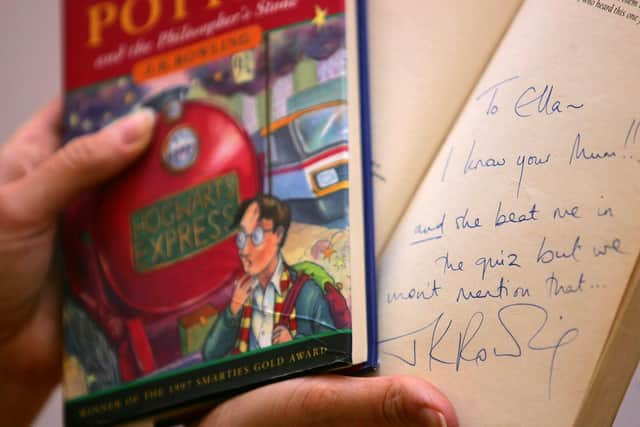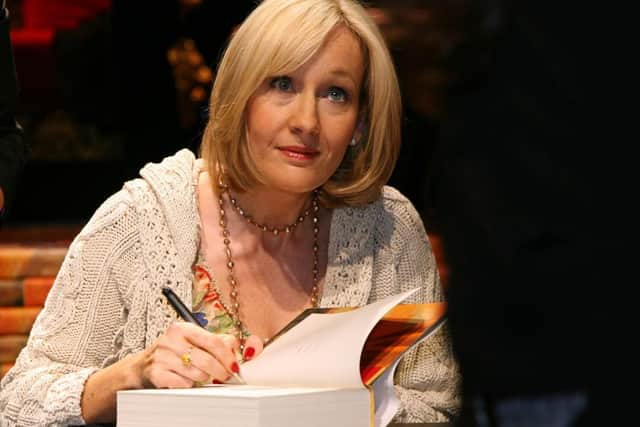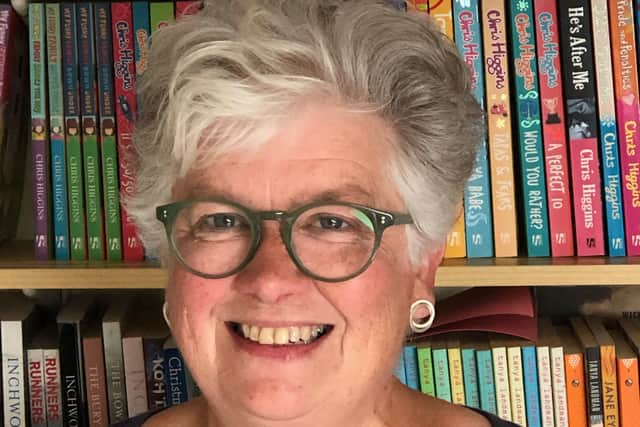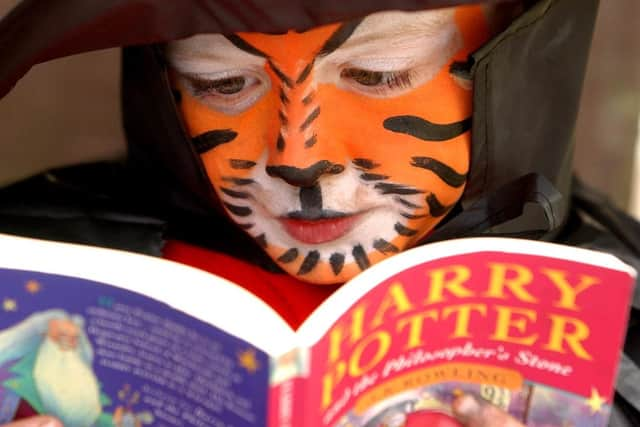Harry Potter turns 25: How JK Rowling’s global literary phenomenon was born
Countless articles have been written about Harry Potter since the schoolboy wizard made his first appearance exactly a quarter of a century ago on Sunday.
But what is believed to be the very first, on JK Rowling’s debut novel Harry Potter and the Philosopher's Stone, was in this newspaper, where it was hailed as a book “with all the makings of a classic" and “a hugely entertaining thriller”.


Advertisement
Hide AdAdvertisement
Hide AdIts first ever champion in print, Lindsey Fraser, was persuaded to read a manuscript as part of her day job working for the Scottish Book Trust, by a contact in publisher Bloomsbury’s marketing department.
She was also a regular contributor to The Scotsman, which published her glowing review just two days after the book was published on June 26, 1997.
She recalled: “The Scottish Book Trust was all about getting more kids reading more books. We would get proofs of new books sent to us all the time and we were really enthusiastic about writers based in Scotland.
“Roz de la Hey at Bloomsbury, who I really trusted, rang me to check I had received the manuscript and told me that I really needed to read it.


"I remember that we were a bit awash with doom and gloom, and books with issues, at the time. Fantasy isn’t normally my thing, but I didn’t have any trouble believing in it – and it was enormously enjoyable.”
It took seven years for Harry Potter to see the light of day from the first inspiration that struck Rowling during a delayed train journey from Manchester to London.
Writing on her website, she recalled: “Suddenly I had the idea of a boy wizard who went to wizarding school.


Advertisement
Hide AdAdvertisement
Hide Ad"Harry Potter and Hogwarts came out of nowhere in the most physical rush of excitement, and ideas came teeming into my head. I simply knew it was something I would love to write, but that day I was pen-less for once in my life, so as I sat there on the train, I had to rely on imagining the details, most of which ended up being in the books.”
Much had happened in Rowling’s life by the time she eventually moved to Edinburgh – where her sister lived – in late 1993. These life events included the death of her mother, a move to Portugal to teach English, a wedding to a Portuguese journalist she met there, the birth of their daughter, Jessica, and a divorce.
Tucked away in her suitcase were the first three chapters of Philosopher’s Stone. While Rowling trained and taught as a teacher in Edinburgh, “every spare moment” was spent in cafes working on the book while Jessica slept in her pram.
Literary agent Christopher Little, who signed up Rowling after being sent the first three chapters of Philosopher’s Stone, took a year to find a publisher. After 12 rejections, Bloomsbury paid Rowling a £2,500 advance to publish it, but insisted she use the “JK” identity to help make it more appealing to boys.


Barry Cunningham, who snapped up Rowling’s debut, later recalled to The Scotsman making a pessimistic prediction when they first met.
He said: “I did say to her that she would never make any money from her book. But I said it out of the sheer goodness of my heart. The truth is I was worried about her.
"Here was a single mum and the amount of money I was paying for these books wasn't going to pay the bills for long.”
Advertisement
Hide AdAdvertisement
Hide AdBloomsbury initially published just 500 copies of Philosopher’s Stone, but soon had a bestseller on their hands, fuelled by early rave reviews.
A quarter of a century on, it has been translated into more than 80 languages and sold more than 120 million copies, with the tally topping 500 million for the full series, which inspired a movie franchise and a stage production.
Literary critic David Robinson, former books editor at The Scotsman, said: “JK Rowling is one of the few authors I've wanted to interview that I never have.


"I admire her enormously, quite apart from her success. No-one has done more to spread the English language this century.
"Seven-year-old children throughout the world, unwilling to wait for the Harry Potter books to be translated into their language, were working through 760-page novels with a dictionary by their side. I find that absolutely mind-blowing.”
Marc Lambert, director of the Scottish Book Trust, was the children’s programmer at the Edinburgh International Book Festival when Rowling made her debut appearance in August 1997.
He said: “It was fascinating to see, even at that early stage, the excitement and interest building, and not just amongst children.
Advertisement
Hide AdAdvertisement
Hide Ad"That book, and all the subsequent adventures, turned a whole generation into avid readers.
"It reminded everyone that a good book is a huge pleasure to read and improves life.
"Looking back now, we can see how the beautifully thought out and detailed world of Harry Potter has become something more than literature. It’s become a cultural reference point, adding to the sense of who we are.”
The global audience for Harry Potter has long been inspiring fans to visit Rowling’s adopted city, as well as locations used for the films, including the Glenfinnan Viaduct in Lochaber.
A spokesman for Edinburgh World Heritage said: "The Harry Potter books and films have inspired a new generation to explore and engage with the city.
"This has boosted appreciation of Edinburgh’s architectural heritage, with many visitors now hunting down and taking notice of buildings and streets that may have lent inspiration to locations in the books."
A spokesman for VisitScotland said: “The introduction to the wizarding world of Harry Potter was a cultural milestone and continues to be magic for Scottish tourism.”
Comments
Want to join the conversation? Please or to comment on this article.

